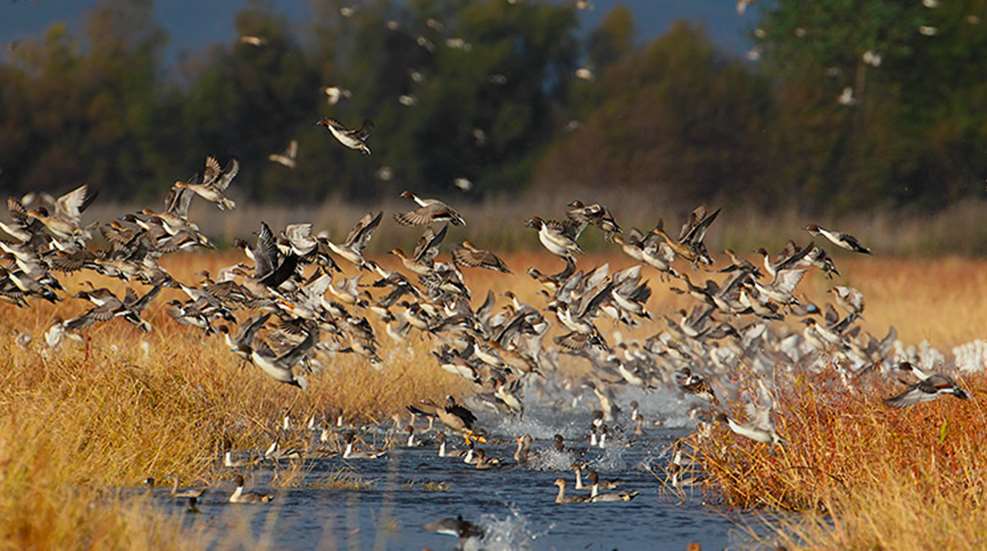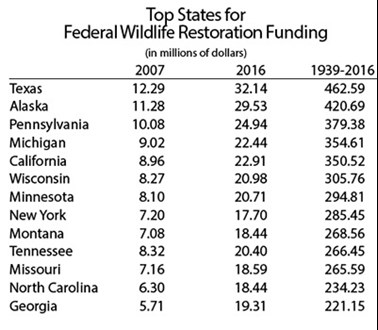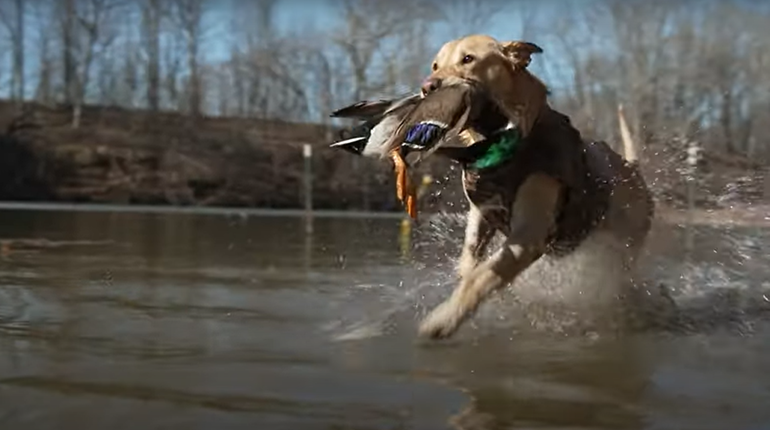
Federal excise taxes collected on the sale of rifles, shotguns, handguns, ammunition and archery gear have nearly tripled during the past decade, boosting federal funding for the nation’s wildlife and hunter-education programs to record levels even though many handgun, ammo and archery buyers don’t hunt.
These funds are collected under the Pittman-Robertson Federal Aid in Wildlife Restoration Act (P-R Act). This law levies an 11 percent federal excise tax (FET) on the sale of firearms, ammunition and archery equipment. The Internal Revenue Service collects the tax from manufacturers, and then transfers the revenue to the U.S. Fish and Wildlife Service (USFWS) to distribute to state wildlife agencies for research and management, as well as hunter education and shooting ranges. At risk of simplifying the payouts, an easy explanation is the USFWS disburses the funds based on the states’ land area and hunting-license sales.
Yes, even though most handguns are purchased for personal protection and target shooting, the P-R Act requires manufacturers to pay the 11 percent FET for conservation efforts. Recent sociological research indicates roughly 60 percent of firearm and archery shooters don’t hunt.
Funds generated by the P-R Act cannot be diverted by Congress or federal agencies to anything unrelated to bird and mammal conservation, and shooting range development on public lands. Although various raiders have tried to tap into that funding since the act’s 1937 passage, citizen-hunter organizations rallied to stop them while working with lawmakers to eliminate possible loopholes.
The P-R Act was a joint effort by the federal government and firearm industry to ensure stable, long-term funding for the nation’s wildlife programs. Later, as the archery industry grew in the early 1970s, Congress imposed the 11 percent FET on bows, arrows and broadheads, a move prodded largely by Fred Bear and his Bear Archery Co.
Ammo, firearms and archery sales generated unprecedented FET collections the past 10 years, especially during fiscal years (October-September) after the 2008 and 2012 presidential elections that put Barack Obama in the White House. Overall FET revenues jumped 39 percent in fiscal year 2009 and 46 percent in 2013 from the previous years.
 Fears of gun-control efforts by the Obama administration triggered heavy spending on ammo and firearms, which generated more tax collections through the P-R Act, and more money for state-based conservation efforts. In fact, FET collected in fiscal year 2014—the most recent year with complete data on handgun, long gun, ammunition and archery sales—was $823.9 million, nearly three times the $278.24 million collected in 2006.
Fears of gun-control efforts by the Obama administration triggered heavy spending on ammo and firearms, which generated more tax collections through the P-R Act, and more money for state-based conservation efforts. In fact, FET collected in fiscal year 2014—the most recent year with complete data on handgun, long gun, ammunition and archery sales—was $823.9 million, nearly three times the $278.24 million collected in 2006.
FET collections on ammunition hit a record $298.9 million in 2014, which was 3.5 times more than the $84.26 million collected in 2006. Ammunition traditionally ranks second behind rifles/shotguns in FET collections, but from 2008 through 2014 ammo contributions to P-R funding ranked No. 1 four out of seven years.
Even so, in terms of category growth, handgun sales took the greatest jumps in recent years, nearly quadrupling their P-R contributions from $57.7 million in 2006 to $219.15 million in 2014. Meanwhile, rifles/shotguns contributed $250.72 million in P-R revenues in 2014, or 2.3 times more than the $107.62 million collected in 2006. Archery FET collections nearly doubled those years, rising from $28.67 million in 2006 to $55.13 million in 2014.
Obama’s November 2008 election also triggered a 30 percent increase in background checks required for firearm purchases in the months immediately thereafter. By the end of March 2009, the FBI reported eight straight months of increased background checks for firearm sales. Taxes collected from importers and manufacturers of firearms took a similar jump, rising 31.3 percent during 2008’s final quarter. And taxes collected from January through March were 43 percent higher than the same period in 2008.
FET collections through the P-R Act were similar in fiscal year 2009 (October 2008-September 2009). The IRS collected $485.14 million from gun, ammo and archery manufacturers in 2009, a 39 percent increase. Taxes on ammo sales took the biggest leap, jumping 44.5 percent from $114.9 million in 2008 to $166.05 million in 2009. Meanwhile, the FET increased 14 percent from handgun sales, and 34.5 percent from rifle/shotgun sales, while declining 12 percent from archery sales.
Obama’s reelection in 2012 sparked even larger sales in fiscal year 2013 (October 2012-September 2013). The FET collected on rifles/shotguns delivered the most revenue, $286.2 million, up 60 percent from 2012; while FET jumped 46 percent from ammo, 39 percent from handguns and 15 percent from archery.
Since the P-R Act’s creation, Texas has received the most federal funding, $462.59 million, thanks to its size and hunting population. And because of its gigantic land mass, Alaska ranks second with $420.7 million. Pennsylvania ranks third all time at $379.38 million.
Given the way FET money is apportioned to state wildlife agencies, the more ammo and shooting gear people buy, the more federal funding a state receives the following year. Take Pennsylvania, for example, home to one of the nation’s largest hunting populations, including about 750,000 deer hunters.
The Pennsylvania Game Commission received $16.97 million in P-R funding in 2010, a 39 percent increase over its 2009 apportionment. The increase was more dramatic in 2014, when the PGC received $27.97 million in federal funding, a 46 percent increase from 2013.
Should states expect these record P-R contributions to continue? That’s hard to predict. Many experts expected sales to level out after 2010, but then 2014 contributions hit record highs. Although these funds declined overall in 2015 and 2016, they could conceivably spike again if, by the time this story goes to press, Hillary Clinton has been elected president.
But even if the firearm industry never again sells as many units as it has the past decade, and even if hunting-license sales continue lagging, most experts don’t foresee declines in recreational shooting. If people continue to visit shooting ranges with all those firearms, ammo sales should remain strong. As some folks can attest, an avid handgun shooter fires more rounds in one weekend than many hunters shoot in a lifetime.
The firearm and archery industries have been working the past year to get Congress to enact the Pittman-Robertson Modernization Act, which would provide more money and greater flexibility for spending P-R funds for shooting ranges and hunter-recruitment efforts. Currently, agencies are not allowed to use P-R allotments on hunter recruitment, and P-R funds for shooting ranges are restricted to ranges used for hunter education.
H.R.4818 and S.2690 would provide state agencies more flexibility in how they use the P-R Act’s designated hunter-education funds. The bills would also boost those designated funds from $3 million to $8 million annually for national efforts to promote hunter education, recruitment and the shooting sports, and broaden states’ abilities to help build and maintain shooting ranges.





































